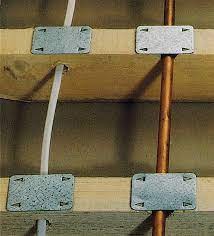I bought a 1960s ex-state house late last year (weatherboard cladding), but have encountered a few oddities with some of the walls. Last Sunday I was fitting a shelf in my bedroom. The area of wall where the shelf was going to go is external on the other side (by the front door, adjacent to the meter box). I used a stud finder to find the stud, and measured out the corresponding hole to drill a pilot for the plasterboard anchor I was going to use. But once the drill got past the plasterboard it met serious resistance. It definitely didn't strike wood - it felt like concrete or maybe even metal, but it wasn't a nail or screw head. I drilled test holes in a matrix pattern over an area of about 40cm x 20cm (gave up as I didn't want to drill more holes in my wall) and all met the same resistance. I wondered if maybe there was some kind of metal plate behind the plasterboard, but I couldn't imagine why (unless it was related to the meter box somehow). I had a similar problem in the utility room adjacent to my laundry. When I tried to fit the charging bracket for my Dyson, I ran into similar resistance, but in that case I was able to simply move across and find a different stud to fix it to.
I'm not a builder so I don't know what's back there but I wouldn't expect to find concrete or steel behind plasterboard in a house this age. Shouldn't it just be timber framing?



